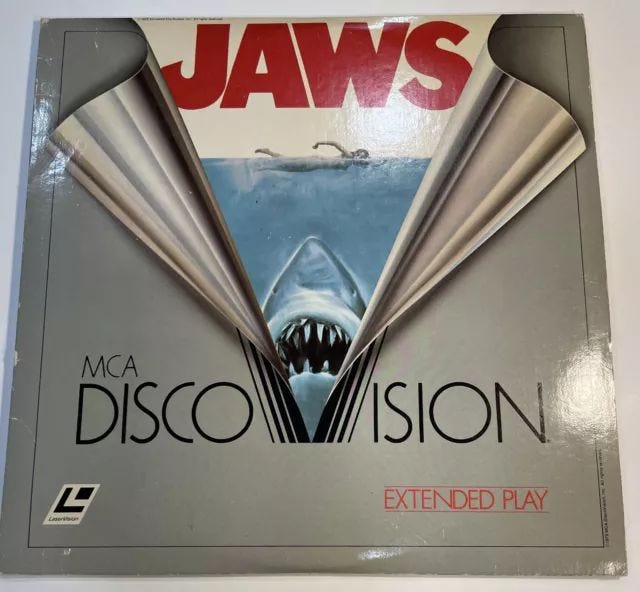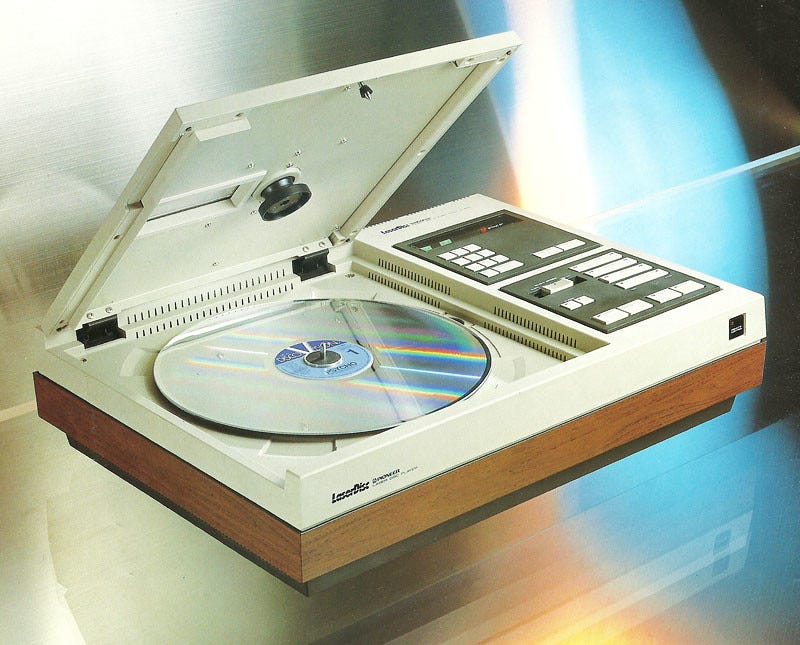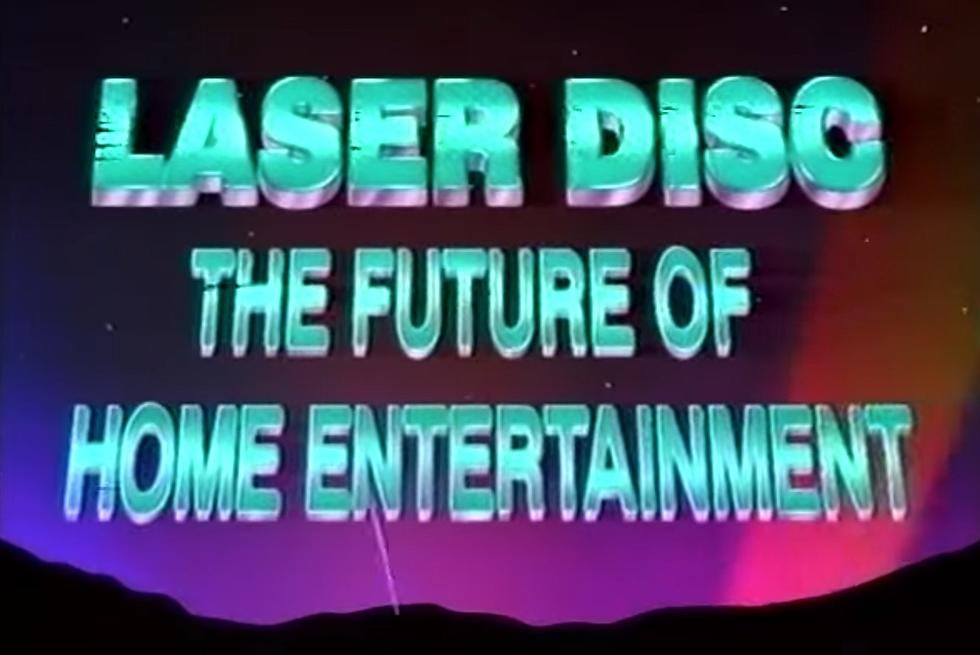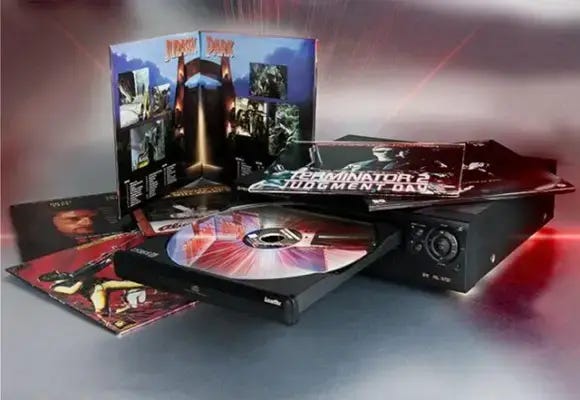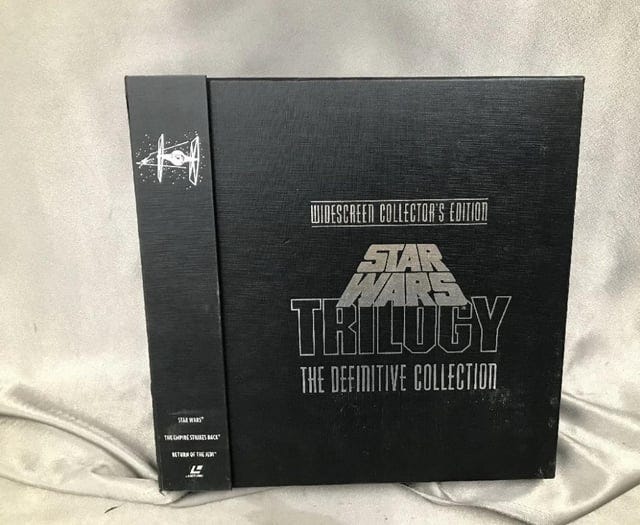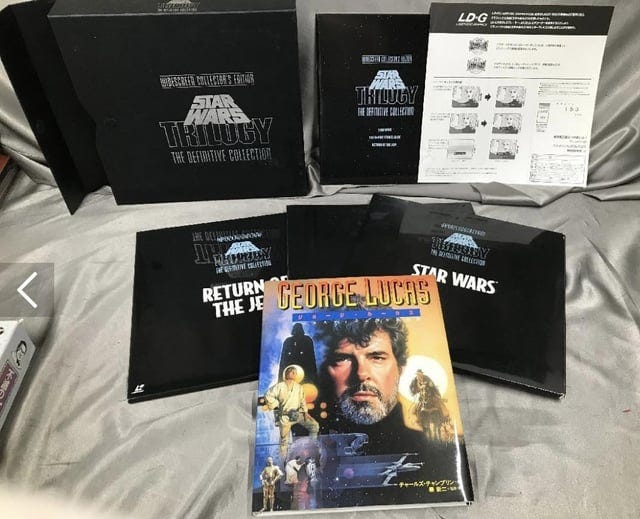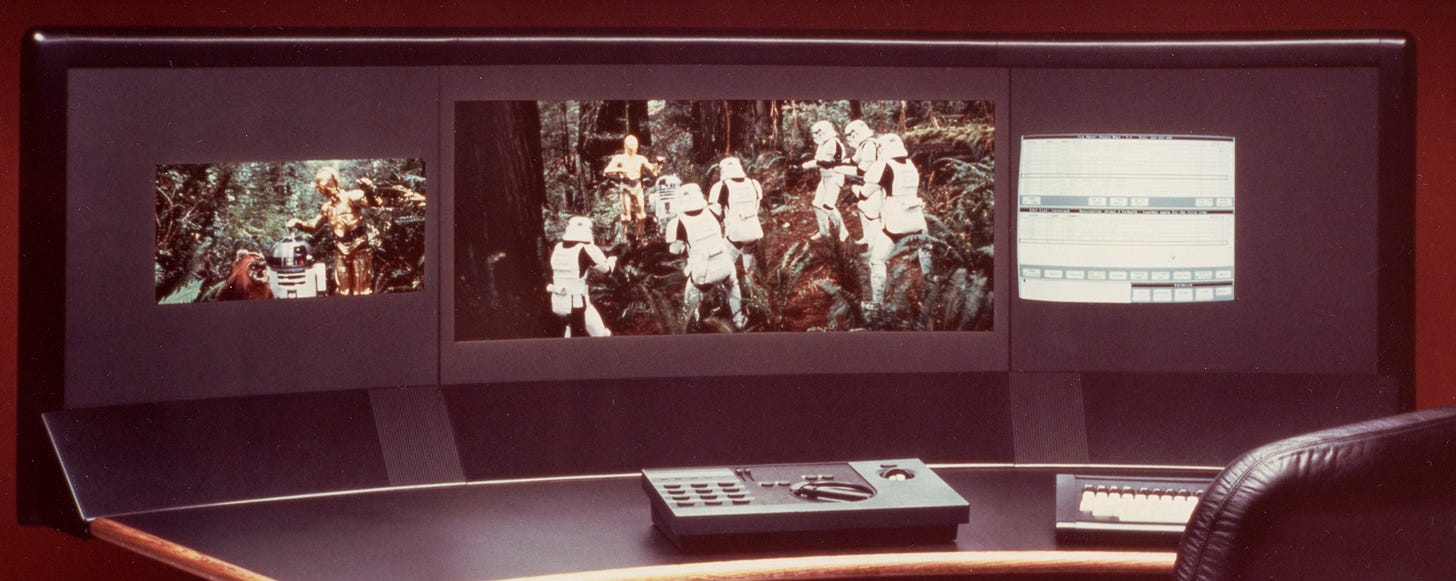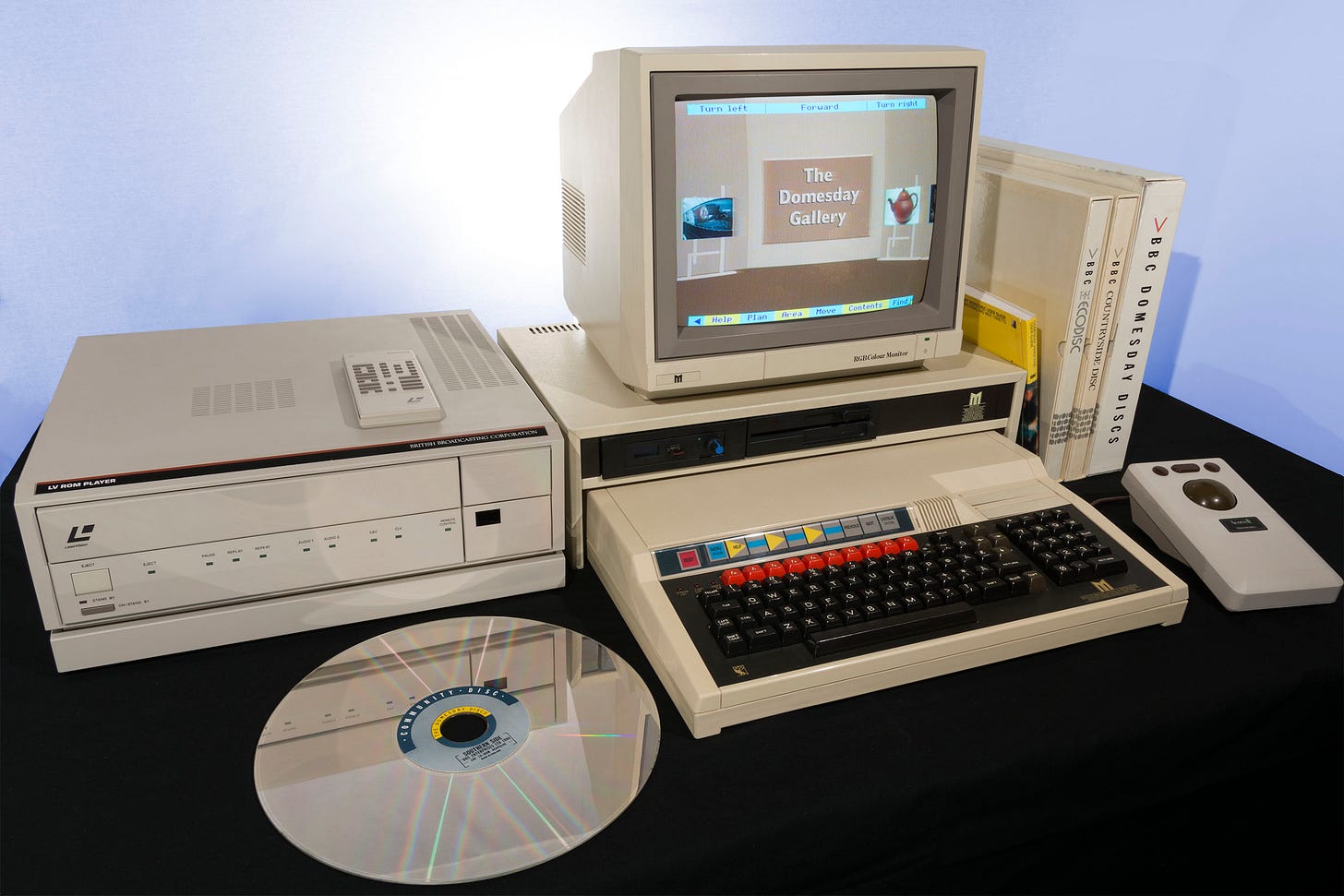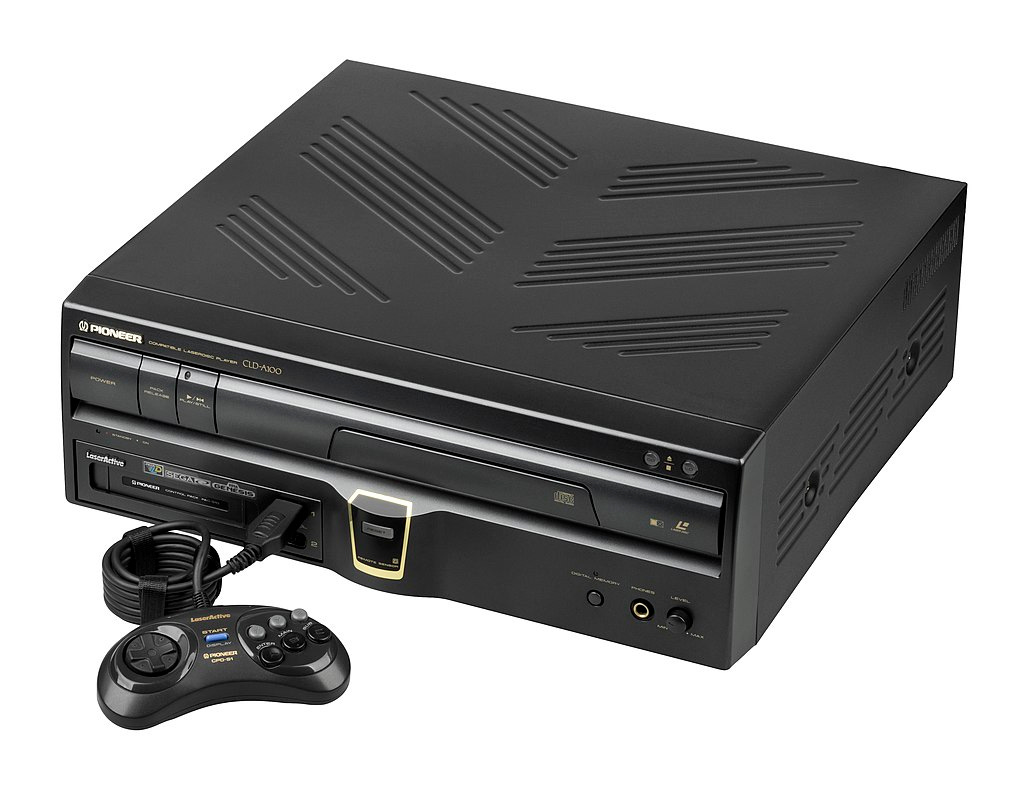David Paul Gregg was born on the 11th of March in 1923 in Los Angeles, California. From 1940 to 1943, Gregg was in the US Navy. He attended Kansas State University from 1945 to 1947 and then transferred to the University of Southern California from which he received his Bachelor of Science in Electrical Engineering in 1950. He then continued his postgraduate education at the Case Institute of Technology and also back at the University of Southern California. Like many students at the time, Gregg worked throughout the time of his postgraduate studies. In 1956, Gregg began working at Westrex (a Western Electric subsidiary). In 1958, he was experimenting with a shellac disc where he’d encoded audio with FM signals in pits and ridges and then read the information with a laser. Gregg’s employers wanted to own the patent for this work, and Gregg refused leading to his termination in 1960. Undeterred, Gregg went to work for Mincom (a subsidiary of 3M) who was a direct competitor of Westrex. He further developed the technology there with Wayne Johnson and Dean De Moss and he gained the patent for his work in 1962 as an electron beam recording and reproducing system. This work at Mincom covered recording and reading discs as well as a method for displaying the decoded data on a television. While there are patents for this work filed by 3M, Gregg refused to give up full control of his invention. He was fired yet again. David Paul Gregg was an indefatigable individual, and he chose to start his own company, Gauss Electrophysics, to further the development of optical video and audio storage. Gregg cited a technical description gracing his desk in 1956 as the inspiration for his work, and given that timing, the most likely work was that of Antonio Rubbiani from Modena, Italy. He developed a plexiglass disc that had actual images on its surface with light and magnification in the turntable. The earliest versions of this had trouble with reproduction due to interference from the electric motor in the turntable, but it was enough to publish his results.
An interesting note is that while Gregg was continuing his work on optical storage and playback, the company’s trademark was filed for the business of magnetic tape recording and duplicating machines, and many of his patents did mention using electron beams and lasers for the reading of magnetic tape. As for Gregg’s disc technology, he called it VIDEODISK. It was an analog optical disc with video and two audio tracks. The disc was transparent and light passing through the disc was read by a sensor on the side opposite the laser.
In 1967, Gregg reached out to Philips Electronics to have them either license or purchase the technology, but Philips wasn’t interested. MCA, on the other hand, most certainly was and they purchased Gauss Electrophysics in 1968 along with all of Gregg’s patents. With this acquisition, MCA created MCA Laboratories in Torrance, California. Within just a few years, this became MCA DiscoVision, and on the 12th of December in 1972, this research arm of MCA held a press conference at Universal Studios to demonstrate their Disco-Vision system to the world. As far as I can tell, this was the first public demonstration of a technology of this sort using lasers, reflection, and spinning disks. On the MCA discs, video and audio information was encoded as variable distances between the edges of pits in a spiral track, as the laser passed over the track during the discs’s rotation these pit variations reproduced a frequency-modulated analog signal. These discs were made of thin sheets of mylar, and in the demonstration, a single Disco-Vision disc played seven minutes of video and audio clipped from twenty two different movies. However, according to MCA, these discs could hold up to twenty minutes of video on a single disc with constant angular velocity at eighteen hundred RPM. Each track on the disc then contained one video frame, permitting thirty six thousand individual frames. An alternative format MCA pursued was the constant linear velocity disc which could hold forty minutes of playback per side, but these discs didn’t allow arbitrary frame access; in other words, the original MCA discs could be either twenty minutes for forty minutes, but the forty minute discs would not allow a user to randomly access data. These formats were improved over time with CAV eventually offering thirty minutes for NTSC and thirty six minutes for PAL on a single side of a disc. CLV was eventually imrpoved to allow sixty minutes per side for NTSC and sixty four minutes for PAL.
While MCA was attempting to make ready its DiscoVision for the mass market, Philips was pursuing an extremely similar technology in the Netherlands. Representatives from Philips had attended the press conference in December 1972, and while they’d not wished to work with Gauss previously, they were apparently impressed by the demonstration, and they contacted MCA Disco-Vision immediately. While the two companies’ technologies were truly close to one another, Disco-Vision did have the distinct advantage of being able to replicate discs, and play from those discs. There is some conflicting information about Philips’ optical technologies. The most commonly cited origin of the work at Philips is with James T. Russell working at the Battelle Memorial Institute, completely independently of David Paul Gregg, where his work was viewed by both Philips and Sony. I am sure Russell’s work was extremely influential over the years, but I believe that it was the work of Piet Kramer who led Philips’ optical research group, Klaas Compaan who caried out much of the practical work, and Gijs Bouwhuis working on optics which ultimately produced Philips’ early optical storage technology. Russell’s work became far more important later on with a different format. Compaan and Kramer began working black and white video recorded to a spinning glass disk in 1969, and they had a working prototype available in September of 1971. They demonstrated the prototype to Philips’ management in December, and then in July of 1972, they had a working color prototype.
By September of 1974, MCA Disco-Vision and Philips began to cooperate on optical disc technologies. Certainly, they wished avoid competing with one another with incompatible technologies that would likely make the medium fail completely, but it also seems to me that they were likely trying to keep RCA’s upcoming SelectaVision from becoming successful. I am sure that they were also worried about both VHS and BetaMax. While sharing research information and technologies, the two companies were able to accelerate development. The final arrangement between the two was that MCA worked on disc mastering and replication while Philips manufactured and distributed the consumer disc player through its Magnavox brand.
MCA also wanted to tackle the industrial market and they made an agreement with Pioneer to form Universal Pioneer in October of 1977 for this purpose. As a condition of this joint venture, Pioneer was also able to build a mastering and pressing facility in Japan. The most famous of these early systems was the PR-7820 models 1, 2, and 3 which was used in video game arcade cabinets, car dealerships, and many more places. This model featured 1kb of memory allowing it to execute programs stored as data on the analog right channel. While the player had basic controls on the front panel, a full-featured programming remote can be used via IR or wired connectivity as well. The PR-7820 also had a parallel port, and an optional DB-25 serial port via the UEI-232 interface box.
By this point, the discs were more recognizable to all of us today. These were twelve inches, reflective aluminum with clear plastic, and the laser that read them was helium-neon at six hundred thirty two nanometer wavelength. The image quality was superior to tape and broadcast television, and audio quality was similarly good. Early discs had analog audio with poor components and mastering, but the encoding was far better and less lossy than alternatives then available.
On the 13th of December in 1978, MCA DiscoVision (yes, no hyphen, they rebranded) and Philips Magnavox held a press conference at the Regency Hotel in New York. In the ballroom, they told all attending that they’d introduce their new disc system in Atlanta, Georgia followed by Seattle, Washington. On the 15th of December in 1978, MCA’s discs and Magnavox’s Magnavision VH-8000 went on sale in three stores in Atlanta. Magnavox had hoped to make fifty players available at a price of $749.00 each (about $3588 in 2024), but just half that number had made it in time. All were sold a few hours after the stores had opened, and discs sold well despite many of the purchasers not yet owning players. While MCA had hoped to have five hundred titles available at launch, by February of 1979 as the system entered Seattle stores just fifty were available. The first title marketed and sold was Jaws.
This was a great debut, but things weren’t actually going well at all. Complaints began early. These early discs and players weren’t of high quality, some players weren’t compatible with some discs and/or features, and failure rates were high. Despite the trouble, sales continued and the two companies continued their rollout while Philips began investigating the complaints. DiscoVision engineers were also studying the problem, and their solution was to modify the player to allow playback of all available discs. Philips derided these mods as band-aids that ameliorated discs not conforming to specifcations. Much to MCA’s credit, the Pioneer PR-7820 was happily playing every available disc while Philips’ players were not.
For 1978 and 1979, the Magnavox Magnavision VLP/DiscoVision system was alone on the market, and by the end of 1980, full nationwide rollout was completed. Then, in June of 1980, Pioneer chose to introduce the VP-1000 to retail in Madison, Minneapolis, Dallas, and Syracuse using the name of LaserDisc. By Christmas, Pioneer was everywhere and they’d lowered the price of their player to $500 (roughly $1895 in 2024), the number of titles had significantly increased, and Philips was struggling to make sales.
For MCA, the situation was every bit as grim as that for Philips and even a bit more. The company had two existing plants for disc production, mastering, and duplication. One, and the first, was a small batch production and research facility in Torrence, California. The second was a large mass duplication plant in Carson. This second plant essentially had total responsibility for all disc mastering and duplication. Yields were bad, cost of replication was higher than expected, returns were high, and MCA needed money. In the late 1970s and early 1980s, if you were making a data storage medium and you wanted help, to whom did you turn? IBM. A bit of information that would surprise absolutely no one, IBM too had been researching optical storage media not too dissimilar from MCA’s. On the 19th of September in 1979, MCA DiscoVision ceased to exist. Under MCA’s new agreement with IBM, a joint venture was formed as Discovision Associates. IBM then took charge of all research, development, and manufacturing of discs, and MCA supplied them with their knowledge while continuing to do distribution, sales, marketing, and content procurement. In what appears to be a constant with IBM, their staff and that of MCA didn’t really get on. IBM had initially expressed intent to improve the Carson facility, but they chose instead to build a new location in Costa Mesa. For anyone thinking that this would be the end of it and that MCA’s fortunes would improve, I have rather bad news… that isn’t at all what happened. Instead, Pioneer completed the construction of their facility in Kofu and began mass producing discs of exceedingly higher quality than anything MCA/IBM could produce at the time. By 1981, Discovision Associates was out of money and going out of business. Pioneer bought half of the company, bought both existing facilities, and began offering their players for rebadging. Philips subsequently quit producing their own players and just resold Pioneer units.
In October 1981, LaserDisc expanded to Japan, where the format would see greater success than any other single market. Shortly after this, Pioneer brought the first major change to LaserDiscs, CAA. CAA stands for constant angular acceleration and is similar to the constant linear velocity format for discs. The difference is that CAA varies the angular rotation of the disc in steps. This format became the standard over time as it improved both sound and picture quality. This format was updated to CAA55 in 1985. The major change was that play time was reduced to fifty five minutes and five seconds per side to allow room for digital audio. This was then updated again in 1987 with CAA60 which offered sixty minutes and five seconds per side, and then CAA65 and CAA70. These later formats had digital audio of 16-bit with a sample rate of 44.1 kHz.
With the advent of high fidelity digital audio and embedded computers on each player, Pioneer introduced dual format players in European markets capable of playing both NTSC and PAL discs. So, if you had a mate in North America, Japan, or South Korea and he sent a copy of Raiders of the Lost Ark to your flat near Leeds Met or Le Mirail, you could play the disc assuming you had one of these new dual format players. Most Pioneer LaserDisc players from the middle of the 1980s onward were also capable of CD audio playback, and their disc trays contained small depressions for the smaller disc. This change was accompanied by another major change to players, infrared aluminum galluim arsenide laser diodes replaced the helium-neon lasers.
Despite LaserDisc having both superior video and superior audio when compared to VHS, VHS was winning the market. Much speculation can be made about why, but the simplest answer is pricing and convenience. While discs were rather cheap ($15 to $40, though box sets and collector’s editions could be significantly more expensive), and certainly cheaper to produce, the players were quite expensive. For a cost example, the Pioneer LD-660 cost around $800 in the middle 1980s when a VCR was $600 (that would be $2400 and $1800 respectively in 2024). This only got worse over time. As LaserDisc players improved, their costs remained high while VHS player/recorders dropped to around $250 by the end of the decade. On the convenience front, the discs were a foot across, about half a pound, easily damaged, and had to be flipped half way through a film. LaserDisc players also didn’t have a recorder function while VCRs did. The VCR’s recording function also served to lower media costs for those willing to borrow and copy a neighbor’s tape of Back to the Future. So why did LaserDisc persist over time? Cinemaphiles. Just as extremely high end audio and video equipment can be purchased today while lower cost and lower fidelity options are more common, this was just as true in the 1980s and 1990s.
Owing to the nature of the market LaserDisc served, LaserDiscs often came with special features. This was especially true of deluxe home video releases by labels such as the Criterion Collection. These releases were made with the best possible transfers to disc, the most numerous special features, tons of artwork and information in the booklet shipped with the disc, and were often shipped on multiple discs. Some collector’s editions, boxed sets, and deluxe releases could cost as much as $250 on release like the Star Wars Trilogy Definitive Collection.
For the audience of ARF, a more interesting development was computer control. Certainly, most LaserDisc players had embedded computers in them, but the film industry (LucasFilm in particular) used LaserDiscs instead of daily prints to film with their EditDroid connected to a Sun-1.
There’s also the curious case of the BBC Domesday Project which used a BBC Master and SCSI LaserDisc player that utilized LV-ROM. These discs contained software, video, and audio on CAV discs with ADFS allowing for 324M of data per disc side.
Both DEC and Apple created systems for the education market. In Apple’s case, this made use of HyperCard and allowed for the creation of LaserStacks on Macintosh or the IIgs. This made use of the serial port and required a LaserDisc player capable of serial control.
In 1989, Pioneer purchased nearly all the Philips videodisc patents as well as over $100 million worth of patents held by Discovision Associates (but this was not all of Discovision’s patents). By the end of 1990, LaserDisc was in roughly a million homes in the USA and Canada, but it was significantly more popular in Japan, Singapore, and Hong Kong.
In the 1990s, the Amiga saw some games get released on LaserDisc. For these games the Amiga would need to be paired with a Pioneer unit capable of computer control such as the PR-7820, LD-V1000, or LD-V2000. Most of these were originally intended for use in arcades that combined an Amiga board (or similar m68k) with a Pioneer LaserDisc player and offered a light gun or arcade joystick. Many of these titles were later ported to Sega CD, CD-i, 3DO, Sega Saturn, or Sony Playstation. Of course, when speaking of the Amiga, a far more common use of LaserDiscs was in combination with a Genlock allowing the LaserDisc’s video to be overlaid with other video from the Amiga.
On the 20th of August in 1993, Pioneer released the LaserActive for $970. The LaserActive was a video game console, a CD player, a LaserDisc player, a karaoke machine, and offered an add-on port which could be used to add a Sega Genesis or a TurboGrafx-16. The LaserActive also featured an RS-232 port allowing for computer control. Given the price of the LaserActive and the price of the add-ons (known as PACs) the system wasn’t successful, though it was the single most expensive way to get a SEGA Genesis. Of course, for those fortunate enough to afford one, it did offer crazy versatility. I’d love to have one in my collection, but prices…
The 1990s saw the two final developments of the LaserDisc format, AC3 and DTS. The first was AC-3, also known as Dolby Digital, which came to LaserDisc with the release of Clear and Present Danger in 1995 providing 5.1 channel surround sound. DTS came to LaserDisc with the rerelease of Jurassic Park in 1997.
DVD launched in 1998, and at first, LaserDisc still offered superior picture quality due to kind of bad artefacting on DVDs and due to encoding problems on early DVDs. Yet, DVDs were far smaller and more convenient with nearly all titles requiring a single side of a single disc. The status of the LaserDisc didn’t last either. The final LaserDisc released in the USA was Bringing Out the Dead in 2000. The quality of both DVD players and discs improved quickly, the prices quickly dropped, and by 2001, DVD players were outselling VCRs in the USA. Despite the big disc format’s demise in the States, it continued in Japan for some time until Pioneer announced its final batch of three thousand players on the 14th of January in 2009:
Pioneer Corporation today announces that it will cease to manufacture its LaserDisc (LD) players upon completing the production of a total of approximately 3,000 more players.
In 1980, Pioneer introduced its first consumer LD player (VP-1000) in the U.S. market, followed by the Japanese market in 1981 and other markets accordingly. The company has seen worldwide sales of its LD players reach more than 9.5 million units to date in a market that saw worldwide sales top 16.8 million devices. It has contributed to the audiovisual enjoyment of so many consumers all over the world. However, under the market environment in which new media such as DVD and Blu-ray discs now dominate, it has become difficult for Pioneer to procure the parts required to produce LD players. Consequently Pioneer has been forced to terminate production of its LD products.
The final models produced by Pioneer are the DVL-919 (DVD/LD compatible player), CLD-R5 (LD/CD player), DVK-900 (DVD/LD karaoke system), and
DVL-K88 (DVD/LD compatible karaoke player).
As for repair services, Pioneer will maintain the spare parts required to restore the normal functions of Pioneer LD players during the minimum storage period.
Today, the majority of both LaserDisc players and LaserDiscs can be had cheaply, and in some cases they are the only way to watch certain films. In many more cases, the special features (commentary, documentaries about the making of a film, deleted scenes, and so on) may not be available on any other medium. In fewer cases, the LaserDisc may still be the best version in video, audio, or both due to being made from higher quality sources. Unfortunately, just as early CDs and DVDs are starting to have some issues, LaserDiscs are also starting to die. On lower quality media, the aluminum layer slowly oxidizes making the disc unreadable. In other cases, the glue used to bind them is giving way as they weren’t well stored.
Discovision Associates still exists as a patent licensing company, and they still control some optical patents, which apply to nearly all optical disc products like CD, DVD, and BluRay.
I now have readers from many of the companies whose history I cover, and many of you were present for time periods I cover. A few of you are mentioned by name in my articles. All corrections to the record are welcome; feel free to leave a comment.

